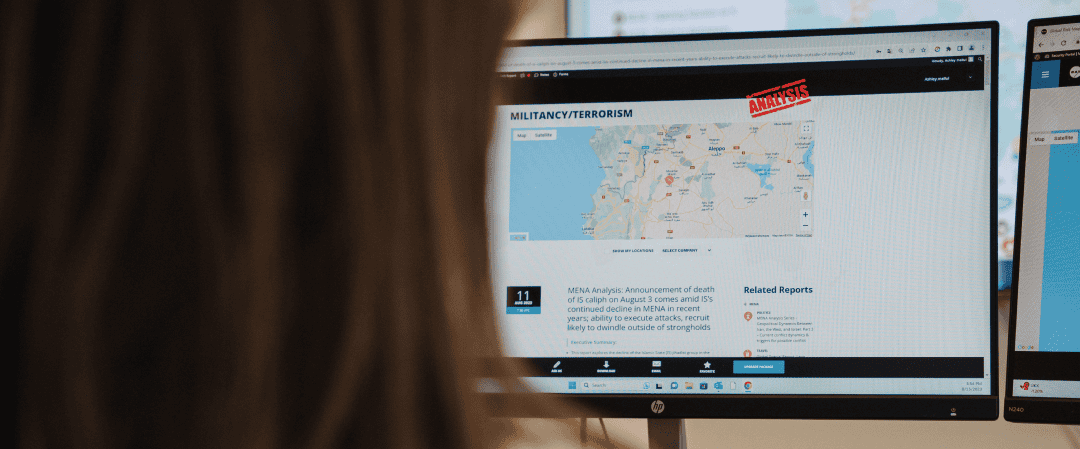
Impact of mis/disinformation on social instability, domestic security landscape in USA
- MAX Security
Table of Contents

In the USA, disinformation and misinformation remained at consistently high levels throughout 2024, peaking during the pre-election phase of the November presidential elections. While the post-election period has seen a notable decline, disinformation campaigns and the proliferation of misinformation will persist through 2025. Disinformation, intentionally false or misleading information designed to deceive, will likely focus on President-elect Donald Trump’s anticipated policy changes and deepening socio-political divisions. In contrast, misinformation, false information spread unintentionally, will also spread as individuals unknowingly propagate inaccurate narratives. Both forms of false information are likely to be disseminated by domestic and foreign actors.
Right wing and left-wing actors to persist in disinformation campaigns, mainly triggered by Trump policies, divisive issues
In the immediate aftermath of the election, false claims and fabricated narratives by domestic actors have targeted existing political and social rifts. With Trump’s presidency expected to further politically polarize the population, the spread of disinformation and misinformation are likely to increase, fueling tensions and potentially inciting unrest and social instability. Disinformation campaigns against Trump are likely to be triggered by opposition to his statements and actions, particularly from Democratic supporters, left-wing groups, and far-left activists. These efforts may aim to undermine his policies, discredit his cabinet, and amplify anti-Trump sentiments, potentially sparking protests and activism.
Among these trigger points will likely be Project 2025, a conservative policy agenda developed by the Heritage Foundation that aims to restructure the federal government along conservative lines. Despite Trump distancing himself from the project, anti-Trump groups have repeatedly linked him to it. Policies by his administration, perceived as aligning with Project 2025, are likely to spark significant disinformation efforts and subsequent spread of misinformation. For instance, a claim circulated on social media alleged that Project 2025 proposes eliminating the Federal Deposit Insurance Corporation (FDIC), an independent agency providing deposit insurance to US banking depositors, although the project did not explicitly propose this. This claim also suggested the project seeks to deregulate banks, jeopardizing citizens’ savings. Such narratives, along with claims about Trump’s ties to Project 2025, are likely to persist, amplified by anti-Trump social media accounts, and designed to deepen public skepticism, fuel anti-Trump sentiment, and galvanize protests in the coming year.
Additionally, disinformation and misinformation targeting Trump and his cabinet nominees are likely in early 2025. For instance, a misattributed quote falsely claiming Elon Musk, Trump’s nominee to lead the new Department of Governmental Efficiency (DOGE), pledged to cut Social Security benefits went became popular on social media. Controversial cabinet appointees including popular individuals such as Musk will likely be repeated targets of misinformation. Additionally, other cabinet appointees could also face targeted misinformation, especially if their policy initiatives provoke opposition from Democrats or left-leaning groups.
Disinformation campaigns by right-wing groups and individuals significantly declined after Trump’s victory but are expected to continue in 2025. These campaigns will likely target public officials and politicians perceived as opposing Trump, both among Democrats and more centrist Republicans. Tactics may include misquoting these individuals and fabricating news articles with false allegations. These may utilize increasingly sophisticated Artificial Intelligence (AI) to create content, such as deepfake videos and photos, and spread it to the public. The primary goals of these campaigns will be to discredit opponents of Trump, intimidate dissenting voices, and rally support for future policy initiatives by Trump.
US’ adversaries to persist in disinformation campaigns to exacerbate domestic polarization
Potential domestic political and social divisions under Trump’s presidency will provide adversaries like Russia, China, and Iran opportunities to exploit these rifts through disinformation campaigns. During the 2024 election, state-sponsored actors employed troll farms, social media bots, proxy websites, and AI-generated content to influence the public. The authorities’ crackdown, including the seizure of 32 domains tied to Russia’s “Doppelganger” campaign in September, helped minimize the impact of such campaigns from undermining the election process. Going forward, foreign actors are expected to persist in using disinformation to destabilize public discourse, shape opinions on divisive issues, and target lawmakers proposing legislation against their interests.
Moscow is likely to continue its disinformation campaigns, using troll farms and social media bots to disseminate false narratives and fabricated content to undermine US-Ukraine relations. This may include attempts to generate opposition to the previous administration’s support for Ukraine or to build public approval for potential policy shifts under Trump that could significantly disadvantage Kyiv. Moscow is likely to target right-wing individuals and Republican supporters, aiming to sustain and amplify anti-Ukraine sentiments already existing within this political demographic.
As tensions potentially escalate under Trump’s administration across trade, military, and geopolitical domains, Iran and China are likely to intensify disinformation efforts to deepen political divides. Iran is expected to exploit domestic rifts on sensitive issues such as the Israel-Hamas conflict, immigration, and other contentious debates, mainly by creating proxy sites mimicking US-based news outlets to disseminate fake news. Meanwhile, China is expected to amplify polarization and push narratives favoring its interests, particularly on US-China tensions and the Taiwan dispute. China is a leader in using AI-generated content and ‘Spamouflage’, a network of fake accounts impersonating US voters and influencers, within its campaigns.
Separately, following the shooting of a high-level executive of a health insurance company in New York on December 4, 2024, fake social media accounts have increasingly amplified posts criticizing corporations and portraying the suspect as a hero. A disinformation detection platform reported that 11 percent of accounts which glorified the suspect exhibited suspicious, anonymous, or bot-like behavior. Many were traced to overseas networks, suggesting foreign-backed campaigns aimed at exploiting anti-capitalist sentiments to incite copycat attacks and unrest against corporations. Foreign actors are likely to continue deploying similar disinformation tactics.
In conclusion, disinformation and misinformation will remain persistent challenges in the USA through 2025, with both domestic and foreign actors fueling divisions and instability. Contentious domestic and global issues, and polarizing policies, will continue to be used as triggers for disinformation campaigns, potentially inciting social unrest.



